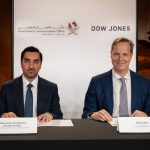The US Dollar has been gaining strength this week as investors are piling into the currency. This surge in the Greenback comes amidst disappointing earnings in US equities and the market recalibration of the Fed interest-rate outlook. The US Dollar index has been adding to its October rally and is now trading in a crucial technical area as it continues to rise.
The US Dollar rallied higher on Wednesday, hitting a fresh three-month high in the US Dollar Index (DXY) ahead of the US Opening Bell. This increase in the USD has been driven by uncertainty surrounding the upcoming US presidential election and safe-haven inflow after equities have continued to perform poorly. US bond sell-offs have also been contributing to the increase in rates, with the US 10-year benchmark rate rising significantly from 4.07% on Monday to 4.23% on Wednesday. With the upcoming election on November 5, the King Dollar is expected to continue its surge as uncertainty in the market grows.
While the US economic calendar is light for Wednesday, investors are eagerly anticipating earnings reports from heavyweights such as Tesla, IBM, Boeing, and Coca Cola. This could potentially impact market sentiment and lead to further movements in the US Dollar. The CME FedWatch Tool is currently predicting a 25 basis point rate cut with an 88.9% probability for the upcoming Fed meeting on November 7, showcasing the anticipated direction of interest rates.
In terms of market movers, US bond yields have been surging, China’s indices have been the last man standing in a sea of red in the equity markets, and US equities are facing additional losses with the Nasdaq leading the decline. The US 10-year benchmark rate continues to rally for the week, currently trading at 4.24%. On the technical analysis front, the US Dollar Index (DXY) is showing signs of a solid rally, breaking above 104.00 and potentially heading towards 105.00 as the first cap on the upside.
Central banks play a crucial role in maintaining price stability in an economy by managing inflation through their policies. By tweaking their benchmark interest rates, central banks can control inflation and drive the economy towards growth or stability. Members of central bank policy boards, such as the US Federal Reserve (Fed) and the European Central Bank (ECB), have differing views on the right approach to monetary policy, with ‘doves’ advocating for loose monetary policy and ‘hawks’ pushing for tighter control on inflation.
A central bank’s chairman or president leads policy meetings, where decisions on interest rates are made. The chairman’s role includes creating consensus among the members and ensuring that the central bank’s monetary policy aligns with the economic outlook. Members of the central bank must adhere to a blackout period before policy meetings, during which they cannot speak publicly, in order to prevent market disruptions. Overall, central banks work towards maintaining economic stability while balancing inflation and growth objectives.











